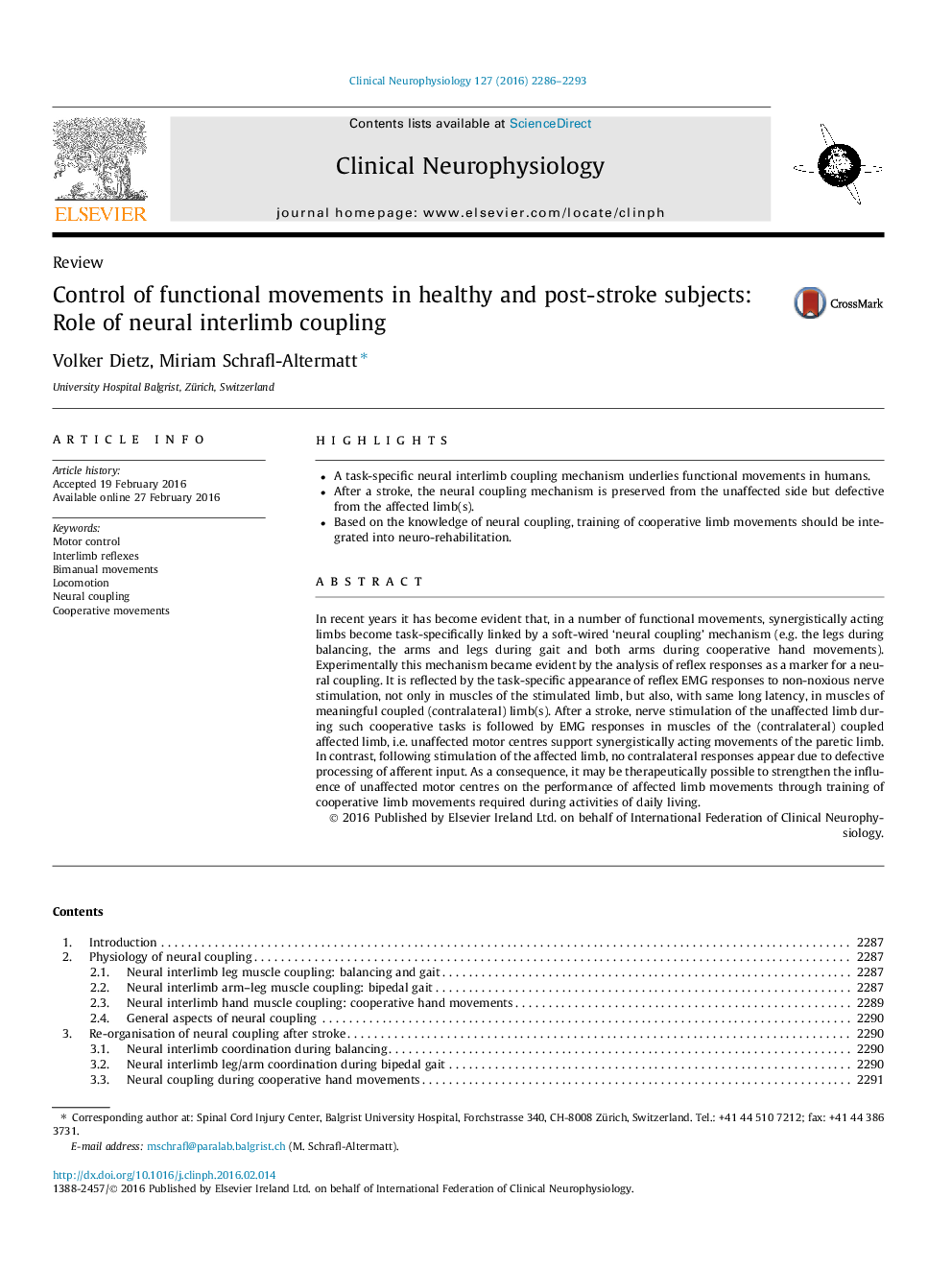| Article ID | Journal | Published Year | Pages | File Type |
|---|---|---|---|---|
| 6007441 | Clinical Neurophysiology | 2016 | 8 Pages |
â¢A task-specific neural interlimb coupling mechanism underlies functional movements in humans.â¢After a stroke, the neural coupling mechanism is preserved from the unaffected side but defective from the affected limb(s).â¢Based on the knowledge of neural coupling, training of cooperative limb movements should be integrated into neuro-rehabilitation.
In recent years it has become evident that, in a number of functional movements, synergistically acting limbs become task-specifically linked by a soft-wired 'neural coupling' mechanism (e.g. the legs during balancing, the arms and legs during gait and both arms during cooperative hand movements). Experimentally this mechanism became evident by the analysis of reflex responses as a marker for a neural coupling. It is reflected by the task-specific appearance of reflex EMG responses to non-noxious nerve stimulation, not only in muscles of the stimulated limb, but also, with same long latency, in muscles of meaningful coupled (contralateral) limb(s). After a stroke, nerve stimulation of the unaffected limb during such cooperative tasks is followed by EMG responses in muscles of the (contralateral) coupled affected limb, i.e. unaffected motor centres support synergistically acting movements of the paretic limb. In contrast, following stimulation of the affected limb, no contralateral responses appear due to defective processing of afferent input. As a consequence, it may be therapeutically possible to strengthen the influence of unaffected motor centres on the performance of affected limb movements through training of cooperative limb movements required during activities of daily living.
